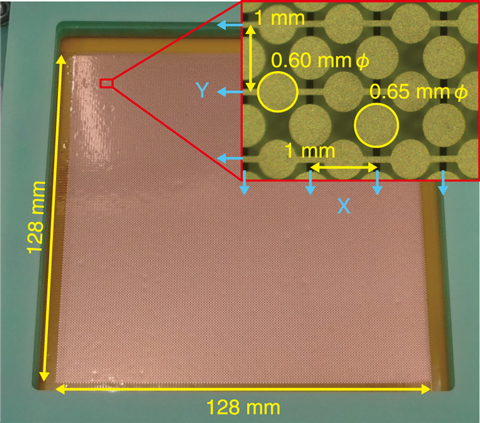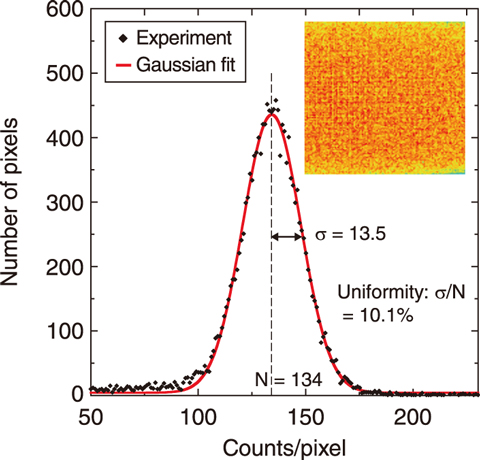
Fig.5-6 Schematic sectional view of conventional and bump cathode elements

Fig.5-7 Whole and partially magnified photograph of the developed bump cathode element

Fig.5-8 Spatial homogeneity of the detector element measured using neutrons
A bump cathode element was developed for a two-dimensional detector system. A schematic sectional view of a conventional and proposed element is shown in Fig.5-6. The former consists of two-layer cathodes for both the x- and y-axes. The neutron-induced signals of the developed element differ based on the distance from the anode lines. The cathodes of the developed element are arranged on a single-layer substrate using printed circuit board technology. The intensity of the neutron-induced signals of both axes were approximately equal in the developed element because of its single-layer structure.
In the gaseous neutron detector used in the neutron scattering experiment, the gas pressure should be increased to obtain a high detection efficiency. However, increasing the gas pressure causes the neutron-induced signal to decrease. The developed neutron detection system employs an individual readout method for a short response and high spatial resolution; this method divides the neutron signal into several cathode lines. To measure the decreased amount of neutron-induced signals with high precision and long-term stability, the collection efficiency of neutron signals must be increased. Therefore, a bump cathode element with a single-layer cathode structure was developed to enable a more efficient collection of neutron signals than found in a conventional two-layer element.
A complete and partially magnified photograph of the developed element is shown in Fig.5-7, where the neutron sensitive area of the developed element is 128 × 128 mm with a pitch of 1 mm in both directions. The developed element consists of a polyimide substrate and two types of circular bumps with diameters of 0.6 and 0.65 mm that are arranged in a triangular shape on the surface of the substrate and are linked together in the x- and y- directions for the individual signal line readout. Neutron irradiation experiments were then performed using the developed bump cathode element. The developed element exhibited an excellent uniformity of 10.1% throughout all of the pixels, as seen in Fig.5-8, exhibiting a full width at half maximum intrinsic spatial error of 1.89 mm and a thermal neutron detection efficiency of 82%. The neutron-induced signal is generally measured by applying voltage to the detector element, though a higher voltage causes discharge degradation to the element. The voltage applied to the developed element could be lower than that applied to a conventional element because of the efficient collection of neutron signals.
The developed element will enable the improvement of high-performance neutron detectors with high precision and long-term stability that make effective use of high intensity pulsed neutrons at J-PARC. The developed element is available as a fundamental technology of various gas-based neutron detectors.